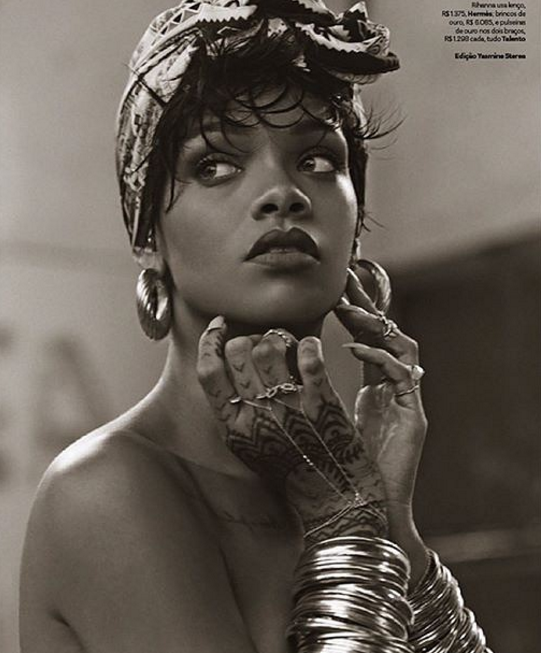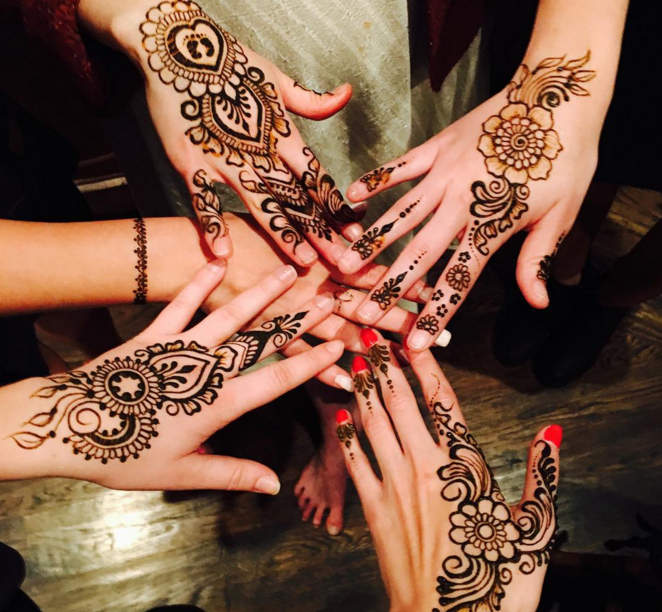The Meaning Behind Beyoncé’s Hennaed Hands

Beyoncé recently shared this snap of her hands and ankles, adorned with henna. (Photo: Instagram/Beyoncé)
Beyoncé has shown the world her henna on Instagram this week, joining other celebrities, from Gigi Hadid to Rihanna (who has a permanent but henna-inspired tattoo on her hands). But what’s the story behind these intricate designs? And, some have wondered, does Beyoncé even know?
Related: Blue Ivy Plays With Beyoncé’s Makeup — and It’s Adorable
Henna adornment, or mendhi, is a tradition that has ancient roots in Indian as well as Egyptian cultures. It was originally used as a way to cool off in the hot desert and then turned into a way to ward off spirits, express happiness, and decorate before a big event like a wedding or religious festival.

Photo: Instagram/Badgalriri
Henna designs start with a few ingredients, and for those wanting it at home, anytime, DIY kits can be had for just $10. To apply it, you mix henna powder with an essential oil (sometimes eucalyptus or clove), and paint it onto the skin with a fine-tip applicator. After it dries, you rub off the powder mixture to reveal the reddish stain of the pattern.

“Had the best night with some of my oldest friends last night. Feel so blessed to have a foundation of friendships that will bond us for the rest of our lives,” Gigi Hadid captioned her pic. (Photo: Instagram/Gigihadid)
Bringing it to the American masses started long ago, of course, particularly when Madonna flaunted her own, in 1998, in her “Frozen” video. And that got some people’s hackles up.
Related: The Inspiring Movement That Has Women of Color Opening Up About Unfair Beauty Standards
“Suddenly, henna went from something no one knew about to something that was interpreted as ‘trendy’ on white girls,” wrote Heina Dadabhoy on a blog thread about cultural appropriation and Madonna’s mehndi. She reminisced how “in the days following any given celebration, I was mocked, berated, and othered by white people, young and old, for having ‘gross things’ on my hands. I would try to educate them but was mostly dismissed out of hand.”

Madonna’s henna sparked a popular-culture interest in the traditional art via her “Frozen” music video. (Photo: YouTube/Queenmadonnahd)
Henna isn’t a beauty trend, Dadabhoy continued, but an art form that is deeply rooted in history. It’s a feeling that was echoed this week, through the hashtag campaign #ReclaimTheBindi, through which South Asian women spoke out against what they believe is the appropriation of their culture by anglo women who wear bindis for decoration.
The discussion has seeped into Beyoncé’s Instagram feed this week, with some naysayers accusing her of using henna improperly — even comparing it to when “white girls having dreadlocks.” As one critic noted, “Just cause something is beautiful doesn’t mean u have a right to make use of it. Especially when u use it as a ‘decoration’ or ‘body art,’ the meaning behind it is significant and only worn on special occasions. Not knowing that and making use of it just to decorate yourself cause u think it’s nice, IS cultural appropriation.” And, said another, “Mmm damn Beyonce, you can’t just be pro black. Learn about cultural appropriation, babe.”
But at least one supporter had a different take: “Experiencing and embracing different cultures chips away at racism little by little. We as humans should be forced to get to know more about other’s cultures and customs. Divisions need to end!”

